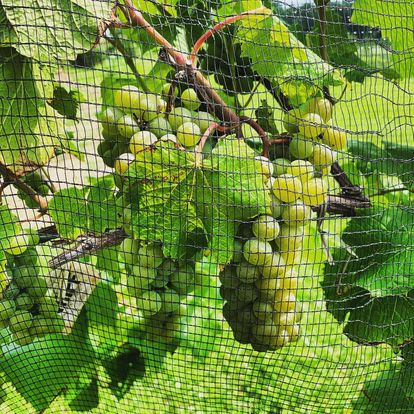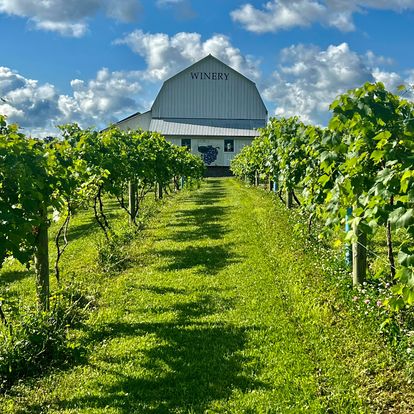
Remembering Mother Earth News
Guest Blogger: John Izzo, Owner of Izzo’s White Barn Winery
As a child of the 70’s, I remember when everyone subscribed to Mother Earth News. The renewed interest in alternative energy sources brings back memories of growing up in the seventies. At the time, there was a national emphasis on being efficient with natural resources while looking for ways to reduce pollution and protect the earth’s ozone layer. We became aware of how important and limited the earth’s natural resources were and how some of our actions were harming the earth and thereby ourselves. We weren’t overly zealous or politically polarized about it, we just tried to be mindful of our resources and not harm ourselves or the planet we live on.
At the time we were told petroleum, now known as fossil fuel, was not going to last as long as it actually has. We also were hearing about the impacts of some poor environmental decisions that were making headlines. Heavily polluted industrial sites, aka toxic waste dumps, had contaminated drinking water. In addition, there was ozone depletion due to the chlorofluorocarbons (CFCs) and halons—gases formerly found in aerosol spray cans and refrigerants being released into the atmosphere.
We were going to run out of fuel in a few decades, we were poisoning ourselves by polluting our water and the hole in the ozone was going to fry us due to increased UV rays. Things were not looking to good for humanity. We began taking some corrective actions.



Wood stoves became popular, as families burned firewood to reduce fossil fuel and electricity consumption. Firewood at that time was looked at as a natural and renewable energy source and burning it provided some exercise. Vegetable gardening and composting became popular ways to lower food bills and reduce waste. In the eighties bottle bills for carbonated beverages were enacted to reduce roadside litter and materials going into landfills by recycling aluminum cans and glass bottles. Corporate average Fuel Economy (CAFÉ) standards were set to mandate increases in miles per gallon for new cars and trucks to conserve limited petroleum supplies and reduce harmful emissions. We changed the propellants used in aerosol sprays and phased out the use of freon as a refrigerant gas to heal the ozone layer. We did better on some issues than others, the initiatives were well intended.
Fast forward to 2020’s and I am now a sixty-something grandpa, looking at history repeating itself in some ways.
I have a concern for what we put on our grapevines to control fungus, how we control weeds under the vines and how we control algae in our pond affectionately known as Lake Lorraine. What is it doing to the environment and what is it doing to me, during the applications?
The 2021 growing season was very wet, we fought the related wet weather diseases. It was a losing battle. We lost roughly 50% of our crop to fungal infection. The infected vines were too weak to survive the winter, we lost quite a few that season. We need to keep the vines healthy to grow fruit and make it through our harsh winters. Vineyard canopy management allows the air flow required to minimize fungal infection while enabling proper grape ripening. We achieve that by pruning away excessive vine growth during the growing season and instituting a preventative fungicide spray schedule.



In the search for environmentally friendly fungicides, I found several organic products. I also discovered a couple of products we have been using are listed as organic. The reviews on the organic products are quite good, the cost is in line with the products we have been using. We have begun to migrate our vineyard spray program to mostly organic products. It will take a couple of seasons to complete the transformation. The journey of 1000 miles begins with the first step. We have started the journey.
Another significant use of non-organic chemicals in the vineyard are the herbicides used to control weed growth under the vine trellis. A weed by definition is any plant growing where it is unwanted. Young grapes don’t like to compete with weeds for water and nutrients, they can easily lose that competition. As previously mentioned, mature vines need good airflow through their canopy to reduce fungal infections, tall weeds can reduce the necessary airflow. Even with 3 – 4 applications per season of herbicide the weeds still come back and the vineyards needed string trimmer work at least 2 -3 times to keep the weeds down.
Our approach for reducing the use of herbicides and maintaining healthy vines, is to plant low growing White Dutch Clover under the trellis areas to choke out weeds, greatly reducing the need for herbicides and string trimming. We started with one final application of herbicide to knock out early weed growth, then cultivated the areas and seeded with clover. In the majority of the vineyard, you now see a dense green carpet at the base of the vines. By no means perfect, but much better than the weeds of the past. As a bonus clover is a nitrogen fixer, adding nitrogen back into the soil. The bees like it too!
Clover under the grapevines for weed suppression.
Lake Lorraine can get a mat of algae across it thick enough to walk on. The pond is basically a catch basin for the agricultural runoff from neighboring farms, the nutrient rich water acts like a Petrie dish. To keep the aquatic weeds and algae in check we stocked with grass carp and channel catfish. The carp eat the weeds and the catfish are rumored to enjoy a nice algae dinner.
We also use an organic dye that prevents the sunlight from reaching the depths of the pond where things like to grow. To help keep the oxygen level up in the water, the picturesque windmill on the back side of the pond is an air pump, look for surface bubbles when it’s spinning.
We conservatively heat the winery with propane to only 58 degrees (bring a sweater), however our commercial electricity rate can be sky high in the warm summer months as we stay cool enough to properly store the wine. Solar panels seem to coincide with hot sunny weather when the air conditioning would be required. Last summer we had solar panels installed on the south facing roof of the winery. At the moment they are covered with ice, let’s hope in July and August they do their thing.
There you have it, what’s old is new again. Growing up in the 70’s gave me some insight and experiences that seem to align with today’s world. I like to think of it as just common sense, not wasting energy and not polluting the land seems like the right thing to do, my grandkids live here.
When you stop out, we can kibitz about if you like. Bring an old issue of Mother Earth News if you have one!